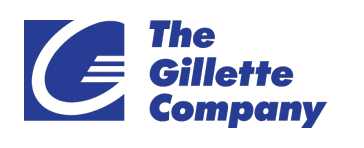“Upon taking office at Gillette, Jim [Kilts] quickly instilled financial discipline, tightened operations and energized marketing, moves that dramatically increased the intrinsic value of the company.”
— Warren Buffett, Berkshire Hathaway 2005 Annual Report
Centerview's principals seek to leverage their operational experience and deep consumer industry relationships in partnerships with management and existing owners to achieve strategic and operational excellence.

Summary
Jim Kilts became CEO of Gillette in February 2001. Over the five years prior to Jim’s arrival, Gillette’s net sales and operating profit had been essentially flat. Jim’s immediate goal upon joining the company was to establish realistic growth targets and align management incentives with the achievement of those targets. Over the next four years, Jim and the Gillette management team initiated a dramatic turnaround that culminated in the merger of Gillette with Procter & Gamble in 2005, creating over $26 billion of value for Gillette shareholders.
Background
Gillette was an industry-leading consumer packaged goods company with 2001 projected net sales and EBITDA of $8.1 billion and $2.2 billion, respectively. The Company had five global divisions, each with its own management teams, competitive sets, opportunities and challenges:
(a) Blades and Razors (Mach 3, Gillette), (b) Duracell, (c) Oral Care (Oral-B), (d) Personal Care (Gillette), and (e) Braun.
Although Gillette was undoubtedly in the upper echelon of the consumer packaged goods industry, by 2000 it had fallen on hard times. In the prior five years, net sales, operating profit and EPS had all stagnated and the Company had missed 14 straight quarterly earnings projections.
This sub-standard financial performance led the Board, which included Warren Buffett and Henry Kravis, to seek a new CEO. Jim became CEO in February 2001, the first outsider to lead the company in 70 years.
Actions Taken
As a result of an external assessment performed prior to joining Gillette, Jim determined that Gillette was consistently underperforming across all five business units owing to poorly managed overheads, excess trade spending, inefficient marketing spending and poor execution across the entire organization. A large part of this underperformance was caused by management setting unrealistic targets and then, in attempting to meet those targets, making poor, short-term oriented business decisions.
In short order, Jim took the following key actions:
- Reorganized management structure to ensure transparency across the matrix organization
- Implemented rigorous operating processes, emphasizing
fact-based management, intellectual integrity, analytical rigor, open communications, simplicity and collaboration - Aligned management incentives with quantifiable business results at both the business unit and Gillette Company level
- Recruited certain key managers from the outside and promoted from within, thereby upgrading Gillette’s top managers
- Aggressively reduced costs by attacking product and overhead costs. Importantly, a large portion of these cost savings were reinvested in marketing and growth initiatives
- Revitalized marketing efforts by implementing a disciplined, analytical approach for evaluating marketing spending. Marketing spending as a percentage of sales increased from 7% in 2001 to 11% in 2005, an increase of $620 million annually
- Improved capital management by reducing working capital requirements and efficiently managing capital expenditures
Results
The revitalization of Gillette had a dramatic impact on almost every financial and value creation metric:
- Net sales increased from $8.1 billion in 2001 to $11.4 billion in 2005, a 9% CAGR
- EBITDA increased from $2.2 billion to $3.7 billion over the same period, a 14% CAGR. Importantly, EBITDA increased meaningfully in each of Gillette’s five divisions
- Net working capital fell from 22% of net sales in 2000 to 0% in 2004
- Operating margins increased from 21% in 2001 to 26% in 2005, reflecting profitable top-line growth and better cost management, somewhat offset by higher advertising spending
- Market shares were growing in businesses representing 90% of 2005 sales compared to only 30% of 2001 sales
Finally, Gillette’s stock price rose from its low of $25.62 in April 2001 to $53.94 in January 2005, creating $26 billion of incremental shareholder value. Importantly, the vast majority of this value was created the old fashioned way – through earnings growth, not multiple expansion.

